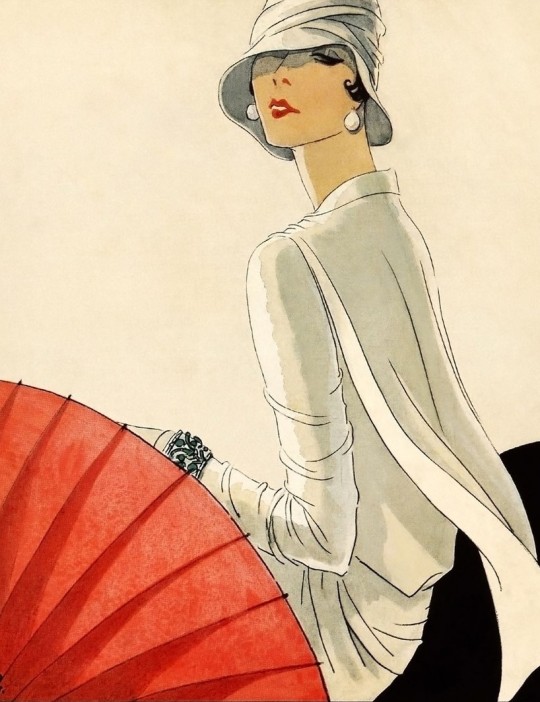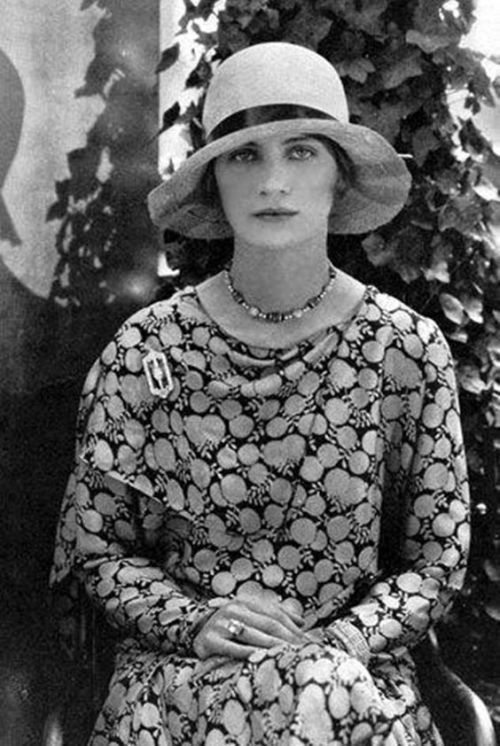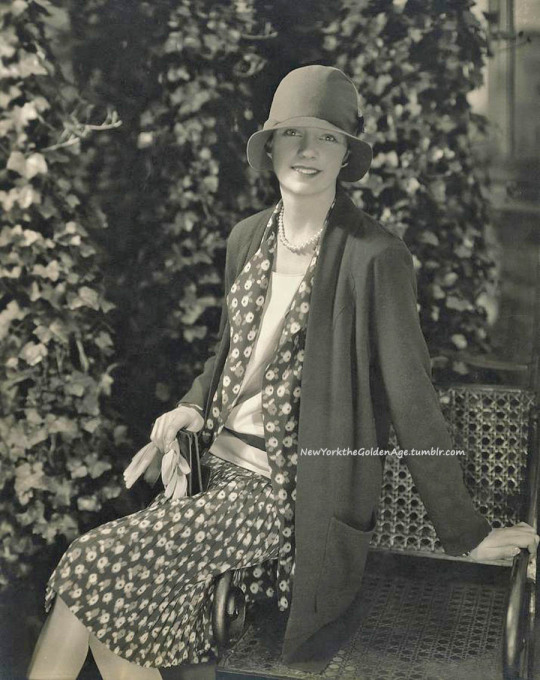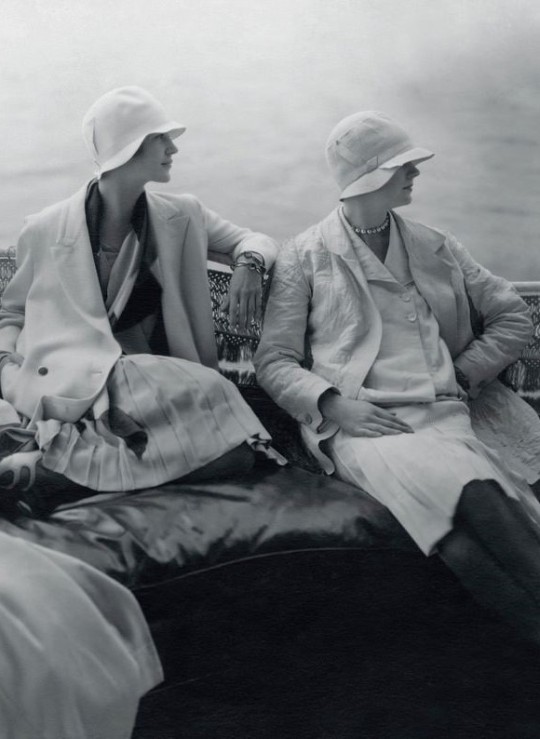#vogue 1928
Explore tagged Tumblr posts
Text

Porter Woodruff, Art Deco Cover illustration for Vogue Magazine, January, 1928
#Porter Woodruff#illustration#cover#1928#1928 illustrations#art deco#cover art#art deco illustration#january issue#vogue cover#vogue magazine#vintage vogue#vogue 1928#fashion#fashion illustration#jazz age#the roaring twenties#magazine#mode#umberella#cloche hat#cloche#1920s fashion#20s fashion#1920s#20s#red#red umberella
159 notes
·
View notes
Photo

George Hoyningen-Huene. Folies-Bergere dancer Georgia Graves, Vogue. 1928
Follow my new AI-related project «Collective memories»
#BW#Black and White#Preto e Branco#Noir et Blanc#黒と白#Schwarzweiß#retro#vintage#George Hoyningen-Huene#Folies-Bergere#Georgia Graves#dancer#Vogue#1928#1920s#20s#portrait#retrato#Celebs#celebridade#ポートレート#肖像#Porträt#Berühmtheit#有名人#名士#célébrité
49 notes
·
View notes
Photo

Edward Steichen, Lee Miller, in Marie-Christiane cloche hat, Vogue, 1928.
#1928#fashion#edward steichen#Steichen#lee miller#cloche#vogue#Marie-Christiane cloche#summer#summer fashion#20s fashion#20s summer fashion#20s vogue#vintage vogue#cloche hat#parisian fashion#parisian chic#chic#model#muse#icon#beuty#war photographer#mother#writer
38 notes
·
View notes
Text
121 Words & Phrases for Dying
A remarkable creativity surrounds the vocabulary of death. The words and expressions range from the solemn and dignified to the jocular and mischievous.
Old English
swelt/forswelt ⚜ give up the ghost ⚜ dead ⚜ i-wite
wend ⚜ forworth ⚜ go out of this world ⚜ quele ⚜ starve
c.1135 — 1600s
die (c.1135) ⚜ fare (c.1175) ⚜ end; let; shed (one’s own) blood (c.1200)
yield (up) the ghost (c.1290) ⚜ take the way of death (1297)
die up; fall; fine; leave; spill; tine (c.1300)
leese one’s life-days (c.1325) ⚜ part (c.1330)
flit (c.1340) ⚜ trance; pass (1340) ⚜ determine (c.1374)
disperish (c.1382) ⚜ be gathered to one’s fathers (1382)
miscarry (c.1387) ⚜ go; shut (1390)
expire; flee; pass away; seek out of life; sye; trespass (c.1400)
decease (1439) ⚜ ungo (c.1450) ⚜ have the death (1488)
vade (1495) ⚜ depart (1501) ⚜ pay one’s debt to nature (c.1513)
galp (1529) ⚜ go west (c.1532) ⚜ pick over the perch (1532)
die the death (1535) change one’s life; jet (1546)
play tapple up tail (1573) ⚜ inlaik (1575) ⚜ finish (1578) ⚜ relent (1587)
unbreathe (1589) ⚜ transpass (1592) ⚜ lose one’s breath (1596)
go off (1605) ⚜ make a die (of it) (1611) ⚜ fail (1613)
go home (1618) ⚜ drop (1654) ⚜ knock off (c.1657) ⚜ ghost (1666)
go over to the majority (1687) ⚜ march off (1693)
bite the ground/sand/dust; die off; pike (1697)
1700s — 1960s
pass to one’s reward (1703) ⚜ sink; vent (1718) ⚜ demise (1727)
slip one’s cable (1751) ⚜ turf (1763) ⚜ move off (1764)
kick the bucket (1785) pass on (1805) exit (1806)
launch into eternity (1812) ⚜ go to glory (1814) ⚜ sough (1816)
hand in one’s accounts (1817) ⚜ croak (1819)
slip one’s breath (1819) ⚜ stiffen (1820) ⚜ buy it (1825)
drop short (1826) ⚜ fall a sacrifice to (1839)
go off the hooks (1840) ⚜ succumb (1849) ⚜ step out (1851)
walk (forth) (1858) ⚜ snuff out (1864) ⚜ go/be up the flume (1865)
pass out (c.1867) ⚜ cash in one’s checks (1869) ⚜ peg out (1870)
go bung (1882) ⚜ get one’s call (1884) ⚜ perch (1886) ⚜ off it (1890)
knock over (1892) ⚜ pass in (1904) ⚜ the silver cord is loosed (1911)
pip (out) (1913) ⚜ cop it (1915) ⚜ stop one (1916) ⚜ conk (out) (1918)
cross over (1920) ⚜ kick off (1921) ⚜ shuffle off (1922)
pack up (1925) ⚜ step off (1926) ⚜ take the ferry (1928)
meet one’s Maker (1933) ⚜ kiss off (1945)
have had it (1952) ⚜ crease it (1959) ⚜ zonk (1968)
The list displays a remarkable inventiveness, as people struggle to find fresh forms of expression.
The language of death is inevitably euphemistic, but few of the verbs or idioms shown here are elaborate or opaque.
In fact the history of verbs for dying displays a remarkable simplicity: 86 of the 121 entries (over 70%) consist of only one syllable, and monosyllables figure largely in the multi-word entries (such as pay one’s debt to nature).
Only 16 verbs are disyllabic, and only 3 are trisyllabic (determine, disperish, miscarry), loanwords from French, and along with expire, trespass, and decease showing the arrival of a more scholarly vocabulary in the 14th and 15th centuries.
Even the euphemisms of later centuries have a markedly monosyllabic character.
Some constructions evidently have permanent appeal because of their succinct and enigmatic character, such as the popularity of ‘____ it’ (whatever the ‘it’ is): snuff it, peg it, buy it, cop it, off it, crease it, have had it.
It’s possible to see changes in fashion, such as the vogue for colloquial usages in "off" in the middle of the 18th century (move off, pop off, pack off, hop off ).
And styles change: we no longer feel that "pass out" would be appropriate on a tombstone. But some things don’t change. Pass away has been with us since the 14th century. And, in a usage that dates back to the 12th, we still do say that people, simply, died.
Source ⚜ More: Word Lists ⚜ Notes & References ⚜ Historical Thesaurus
#writing reference#writeblr#dark academia#spilled ink#langblr#literature#writers on tumblr#linguistics#writing prompt#poets on tumblr#poetry#writing prompts#language#words#creative writing#writing inspiration#writing resources
129 notes
·
View notes
Text

Lee Miller, as photographed by Edward Steichen, for Vogue Magazine, 1928.
191 notes
·
View notes
Text

1928 Eleanor Sherwin wearing a Molyneux evening dress photographed by Steichen for "Vogue". From Art Deco, Avant Garde and Modernism, FB.
85 notes
·
View notes
Text

Model Hannale Sherman on the terrace of Condé Nast's Park Avenue apartment, 1928. This 30-room penthouse, designed by Elsie de Wolfe, was the scene of Nast's many legendary parties. Sherman wears a crepe de chine skirt and jacket over a cream-colored blouse, by Hattie Carnegie, and a hat by Rose Descat.
Photo: Edward Steichen for Vogue via the Condé Nast Store
#vintage New York#1920s#Edward Steichen#vintage fashion#1920s fashion#Conde Nast#Hannale Sherman#Hattie Carnegie#Jazz Age#Rose Descat#penthouse
111 notes
·
View notes
Text

Caja Eric, (Ziegfeld Follies dancer) photographed by Edward Steichen, for "Vogue Magazine" August, 1928.
42 notes
·
View notes
Text

Maurice Chevalier and his wife, actress/dancer Yvonne Vallee, photographed by George Hoyningen-Huene for Vogue in 1928.
28 notes
·
View notes
Text

Edward Steichen
Vogue, june 1, 1928
41 notes
·
View notes
Photo

Lee Miller (21), Vogue, Photo by Edward Steichen, 1928.
#lee miller#1928#edward steichen#vogue#vogue 1928#lee miller 1928#1920s#20s#1920s fashion#20s fashion#1920s hats#20s hats#1920s summer hats#20s summer hats#summer hats#hats#hat#1920s hat#20s hat#1920s fashion photography#20s fashion photography#lady penrose#Elizabeth Lady Penrose#artist#model#photographer#muse#icon
210 notes
·
View notes
Text

Lee Miller, third from left, photographed by Edward Steichen, Vogue, July 15, 1928
37 notes
·
View notes
Text

Lee Miller pour Vogue, par Edward Steichen, 1928.
128 notes
·
View notes
Photo

1928 Edward Steichen, On George Baher's yacht: Lee Miller wearing a dress by Mae and Hattie Green and a scarf by Chanel; Hanna-Lee Sherman wearing unidentified fashion, detail
Gelatin silver print. Courtesy Condé Nast Archive, New York.
Condé Nast Publications
#1928#fashion#summer fashion#20s summer fashion#edward steichen#steichen#lee miller#chanel#chanel scarf#hanna-lee sherman#vogue
22 notes
·
View notes
Text

Noire et Blanche (French for Black and White) is a black and white photograph taken by American visual artist Man Ray in 1926. It is one of his most famous photographs at the time when he was an exponent of Surrealism.
The picture was first published in the Parisian Vogue magazine, on 1 May 1926, with the title Visage de Nacre et Masque d'Ébene. It would be published once again with the current title in the French magazines Variétés and Art et Décoration in 1928.
Man Ray had already published a similar photograph in the cover of the Dada magazine of Francis Picabia, with the title Black and White, in 1924, depicting two statuettes, one European and classical and the other African.
#man ray#surrealism#fashion vintage#vintage#1930s style#surrealist art#1920s#retro movies#retro style
26 notes
·
View notes
